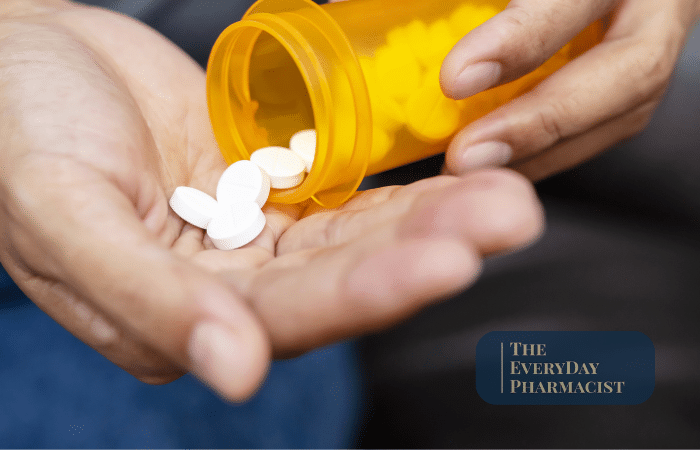
You’re not imagining things. This is one of the hidden complexities of generic medications that most people (and even many providers) aren’t fully aware of.
As a pharmacist, I’ve seen firsthand how generic medications are supposed to be interchangeable with brand names and with each other — but there are layers of nuance that can make a big difference, especially if you have a sensitive system, multiple health conditions, or take more than one medication.
On paper, generics are designed to be “bioequivalent” to their brand-name counterparts. That means:
But here’s the surprising truth: the FDA allows a margin of difference. Early on in my training, I was taught it could be up to 30%. More recent research shows it’s closer to 10%.
Still — when it comes to medications that affect your heart rhythm, your immune system, your mood, or your ability to manage pain, even a 10% difference can be the tipping point.
Generic drugs also come with a mix of excipients — the fillers, dyes, and flavorings that make up the pill’s shape, color, or coating. For most people, these aren’t a big deal. But for sensitive patients, they can trigger real symptoms:
Artificial dyes like red or yellow dye → headaches, rashes, hyperactivity
These different excipients can vary from manufacturer to manufacturer and brand to generic.
If you’ve ever wondered why one refill sits fine with you while the next makes you feel “off,” these generic manufacturer variations may be the reason.
Another hidden factor is where your medications are made and if the manufacturer follows Good Manufacturing Practices (GMPs). The FDA sets standards for manufacturing, but enforcement can vary — especially since many generics are produced overseas.
You may remember the valsartan recall, when blood pressure medications were pulled due to contamination with a cancer-causing byproduct. That wasn’t just a rare fluke — it was a manufacturing defect.
The truth is: while most generics are safe and effective, quality control isn’t always as transparent as patients deserve and can be the cause for inconsistencies in your medication.
Most of us don’t have time to dig through FDA reports or trace where our medications were manufactured. And, your provider or local pharmacy does not typically have the time either.
That’s where The EveryDay Pharmacist can help.
In a 1:1 personalized consult, we’ll walk through:
Generic medications save lives and lower costs. But for some people, the “hidden” differences can impact health in ways that aren’t talked about enough. You don’t have to figure it out alone — and you shouldn’t feel brushed off if your body notices something is “off”.
Schedule an appointment with The EveryDay Pharmacist today to get clarity, confidence, and peace of mind about the medications you rely on.
Sarah Spangler, Pharmacist/Medication Coach
The EveryDay Pharmacist
Disclaimer: At Healing Roots Wellness Center, we’re committed to supporting your mental well-being with professional care and guidance. The information shared in this blog is for educational and informational purposes only and is not intended as a substitute for personalized mental health support or medical advice, diagnosis, or treatment. While we are qualified mental health professionals, we do not diagnose medical conditions. If you have specific concerns about your health or well-being, we encourage you to seek advice from the appropriate healthcare provider. Healing Roots Wellness Center does not endorse any specific tests, products, procedures, or opinions mentioned in the blog. Reliance on the information provided is solely at your own risk. Remember, your mental health journey is unique, and the right support can make all the difference.
At Healing Roots Wellness Center, we’re committed to supporting your mental well-being with professional care and guidance. The information provided throughout our website – including blog posts, articles, and other content – is for educational and informational purposes only. It is not intended as a substitute for personalized mental health support or professional medical advice, diagnosis, or treatment. While we are qualified mental health professionals, we do not diagnose medical conditions. If you have specific concerns about your health or well-being, we encourage you to seek advice from the appropriate healthcare provider. Healing Roots Wellness Center does not endorse any specific tests, products, procedures, or opinions mentioned on our website. Reliance on the information provided is solely at your own risk. Remember, your mental health journey is unique, and the right support can make all the difference.
Whether you’re ready to schedule a free consultation or just have a few questions before getting started, you’re in the right place.
Pilar offers a compassionate, safe space to explore the impact of trauma, relationship wounds, anxiety, overwhelm, and the everyday pressures of life. If you’re longing for more authentic connection — with others and with yourself — this form is your first step.

Whether you’re seeking support for anxiety, chronic illness, trauma, parenting stress, or something else entirely — this is a safe and simple first step.
This short form will help us get to know what kind of care you’re looking for and match you with the best clinician for your needs. You can choose someone specific from our team or let us help place you with a therapist who aligns with your goals and preferences.
You’ll also have the chance to select the areas you’d like support with — whether that’s just one specialty or several.

